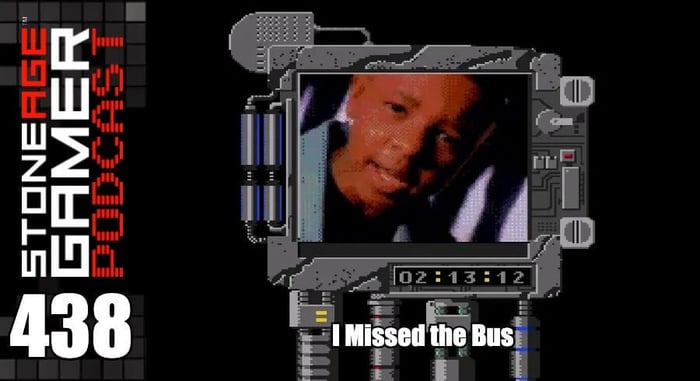
Some Thoughts on Atari 50
Atari 50: The Anniversary Celebration is really something special. Even with some monumental titles missing from its lineup, it manages to set a new standard for how retro compilations are made. As a resident Atari nut, Kris has some thoughts he'd like to share.
Transcript of the video:
Atari 50: The Anniversary Celebration is here and I have some thoughts. If you follow Stone Age Gamer, you may have seen that I had a chance to interview Stephen Frost from Digital Eclipse a few months ago, and it was without a doubt one of the most fascinating interviews I’ve ever had the pleasure of being a part of. He somehow managed to get me even more hyped for Atari 50 than I already was by answering every one of my frankly ridiculous questions with as much clarity as he was able to provide. What I learned was that an incredible amount of care went into the creation of Atari 50, and the hurdles they had to get past were many.
The end result really does speak for itself. Every single inch of this collection sets a new standard for how retro game compilations should be approached. The depth of information on display is staggering, but it goes deeper than just having a ton of stuff to look at and play. What makes this truly special is how it’s presented. A big part of Atari 50 is actually taking the time to learn the history of these games and why they’re special. Each and every one of them. The interactive timeline is an amazing innovation, and I can’t get over how much fun it is to go point by point and learn not just about what Atari did right over the years, but how they failed as well. This isn’t a glorified history, there’s a ton of information about their various failed ventures over the years as well, and it’s so refreshing to see a company able to look back at their failures with a degree of reverence. Of course it probably helps that the Atari of today is not the same Atari as the one I grew up with, but the point still stands. This new Atari understands the brand better than many of the company’s previous iterations, and their willingness to allow Digital Eclipse to dive this deep into their history shows that.
But it goes even deeper than just the concept of the interactive timeline. It’s the execution that turns it from a fascinating trip down memory lane to a truly monumental experience. The way the visuals present the timeline in easily digestible bits. The subtle sound and animation of when a new part of the timeline has been completed. The animations in the background that keep everything lively. The high resolution scans of promotional material. And right at the top of the list for me personally the menu music.
Composed by someone named Bob Baffy, whose work I’m largely unfamiliar with, this music does such an incredible job of setting the tone for this collection in an unbelievably magical way. I can’t put my finger on exactly what it is, but when the music is at the forefront, it sounds beautifully 80s in tone while still modern. There’s something about the piano riff that sounds like a modern take on some sort of 70s or 80s inspirational commercial or something, but then there’s all these wonderful little Atari sound effects playing in the background in rhythm that keep it constantly reminding you of the sounds that made Atari classics so wonderful in the first place. Then it calms down and it’s so open. So massively hollow that it elicits this feeling of being in an actual museum. It plays perfectly between boiling up your nostalgia, inspiring a sense of reverence for everything on display, then backing off to let the content itself take center stage. It's a work of art, and I love it.
Speaking of art, the box art on display is something I truly appreciate because it’s actually correct. This right here is a tshirt that I got at Target a while back, and I’ve seen this image on a number of promotional materials over the years. I’ve never seen a silver label Yars Revenge before. I know a silver label Asteroids exists, but it’s hardly what I’d consider common. Why are these images being used on a shirt meant to inspire nostalgia? Or how about this? This is the Atari VCS digital store. I don’t know if a silver label version of Adventure actually exists, but if it does I’ve never seen it. Meanwhile, Atari 50 has the real deal across all categories and it’s glorious. Truly truly glorious.
Of course, there’s omissions. There was always going to be omissions, especially on a collection spanning a company’s 50 years in existence. These games are a huge bummer to not have on there, but it’s ultimately understandable because of the various rights issues that would need to be navigated in order to include them. Still, it’s hard to see such a comprehensive and lovingly built history ultimately incomplete because of these gigantic yet unavoidable holes. It stings to have to tell the history of the Atari 2600 and not include Atari’s own ports of enormous arcade classics. Atari’s Space Invaders is arguably one of the best and most diverse versions of the game in existence. Atari’s Defender is a magnificent port that simplified the arcade game’s controls down to a joystick and button while maintaining the spirit that made the arcade game a classic. Pac-Man may not exactly be the best way to play the game (and that’s being incredibly kind) but few would argue that Atari’s treatment of that game isn’t one of the most important points in the history of American video games. And on the same token, Atari’s ET game. Yes, it’s widely reviled, but it’s also a monumentally important piece of history. Of course they were never going to score the rights to the ET brand for this release, but it still stinks that it couldn’t have been included for history’s sake.
Third party stuff not being here is also a huge bummer, especially in terms of Activision’s output. This was the birthplace of 3rd party publishing right here, and Activision’s games like Pitfall!, River Raid, Grand Prix, and Kaboom defined the console just as much as Atari’s own output, so again, it feels incomplete without them being there.
Due to the nature of Atari and how the company split back in the old days also left a lot of their own original properties in the hands of various other companies. This meant that even some massive arcade hits with Atari’s own name right on them couldn’t be included. 720 was one of the earliest skateboarding video games, a genre that would eventually take over the world during the PlayStation era. Paperboy was a huge hit, which spawned a weirdly successful NES port. Freaking Gauntlet was an Atari joint and a pioneer in the realm of multiplayer co-op gaming, but it’s nowhere to be found.
When you think of the Atari Jaguar you probably think of the puzzle masterpiece Flip Out!. Okay, that’s actually just me and like 5 other people. It’s actually Alien vs. Predator that most people think of, and maybe to a lesser degree Pitfall: The Mayan Adventure. But again, for obvious reasons, those games couldn’t be included.
The list goes on and on, but while those omissions are painful, they really do go to show just how well put together this collection is. That it can stand on its own and tell Atari’s history without these colossal tentpoles is a testament to the skill and dedication of Digital Eclipse here. There’s no question in my mind that they would have included every one of these games if they had been able to, Especially Flip Out for Jaguar, but they made the best of what was available to them, and what was available to them was quite a lot.
This collection is a masterpiece, and such an important preservation of not only the games themselves, but the world around them. Historical context goes a long way in terms of making games like this feel worth playing in 2022. Even the bad stuff is worth looking into because they all tell a story of a company that has at different times been both the most important name in the industry and almost completely irrelevant.
Atari’s 50th anniversary has been a heck of a ride, and this is the best possible way to finish it off. I could not reasonably be happier.





